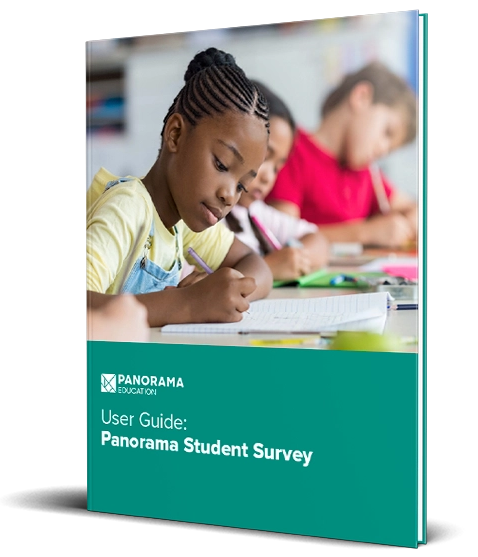Community feedback represents a key source of information for superintendents and school board members to guide decision-making. Collecting this critical feedback can take many forms: focus groups, town hall meetings, and surveys. In this post, we’ll detail how districts can use community surveys to capture high-quality feedback from community stakeholders with a handful of best practices.
Many district leaders feel they only hear a subset of opinions from their community. Community surveys are powerful tools for engaging all of your district’s stakeholders--parents, teachers, staff members, students, and other community members--not just the loudest groups. But the quality of the data you receive is only as good as the quality of the questions your survey asks.
So how can you ensure your community survey collects meaningful feedback for your district to take action? At Panorama Education, we find that the most successful community surveys fulfill the following objectives:

1. Follow survey design best practices
We recommend using discrete answer choices opposed to “Agree/Disagree” choices whenever possible. If you’re asking about the quality of school climate and culture in the district, then you should ask a question that offers clear answer choices like “Somewhat well” or “Extremely well” that target a rating of quality. Another best practice is to always place your demographic questions at the end of your survey, that way respondents can answer your survey without the influence of any background or identity information in mind. Similarly, free response questions can offer respondents a more complete, open-ended opportunity to provide feedback. Yet analyzing these responses can be both time-consuming and difficult to find key themes. Instead, you can target these free response questions to seek specific, actionable feedback: “If you could change one thing about Panorama Public Schools, what would it be?” or "What is the single most positive aspect of Panorama Public Schools?"
2. Create opportunities for community-wide participation
Beyond collecting input from stakeholders, community surveys can also provide deeper opportunities for meaningful participation in your local schools. Your survey is a powerful communication tool, which can signal a district’s message to members of the community. We recommend using an introductory message about why the district is seeking community feedback and how the results will be used and shared upon completion. Start with these sample press release templates that district leaders can use to engage local press outlets and newsletters. In short, the process of seeking community feedback in itself is a powerful message for your district; it's an opportunity to champion community involvement and generate buy-in for your district's goals.
3. Identify strengths and opportunities
A successful community survey provides insights into what different stakeholders view as your district’s strengths and opportunities for improvement. To make this happen, it's best to keep your survey questions at a high-level, in order to capture the key themes facing your community, as opposed to a referendum on individual issues. These focus areas should include a diverse array of themes: classroom instruction, student activities and extracurriculars, school leadership, and more. We recommend disaggregating your community survey results across self-reported demographic information, such as role in the district (parent, student, teaching staff member, non-teaching staff member, community member, etc.), number of years involved with the district, race or ethnicity, and more. By identifying key themes across different stakeholder groups, your district's leadership can more clearly identify the strengths and opportunities as viewed by your school community.
4. Weigh your community’s priorities
Once you've identified your district’s strengths and opportunities, it's time to prioritize each focus area. It’s best to weigh how your community perceives the relative importance of each focus area on your survey. For instance, if your community views student achievement as a strength of the district and a highly important area of focus , then you should sustain your strategy and continue to invest resources. On the other hand, if your community members view physical facilities less favorably, but don't find this area critically important to improve, then you can prioritize other areas. The goal of your survey is not only to produce a "needs assessment," but to gauge which areas your community finds most critically important to target improvements. With this detailed information, your district leadership can prioritize community feedback most effectively.
In all, community surveys can serve as effective tools to capture feedback and engage stakeholders in your district’s strategic direction. We hope you’ll use these four survey best practices as a starting point for promoting community engagement in your district. If you're interested in learning more about Panorama surveys, we would love to hear from you! Email us at info@panoramaed.com.





